Ishiyamadera – Stunning Fall Foliage Spot in Shiga (Under an hour from Kyoto)
Ishiyamadera (石山寺) is a historic Buddhist temple founded in the 8th century in Otsu, the capital of Shiga Prefecture. This temple is widely regarded as one of the best spots for fall foliage in Shiga. Its expansive complex features maple and other deciduous trees that transform into vibrant shades of red and gold in autumn.
For our third trip to Kyoto, we wanted to spend at least half a day of our four-day stay to visit Shiga in order to see Lake Biwako and a nice fall foliage spot. Our shortlist included Mount Hiei, Miho Museum and Ishiyamadera. We were not on any schedule and simply picked a place to go depending on our mood that day. Ultimately, we opted for a relaxing day trip to Ishiyamadera. Here’s a guide on how to get there and why it is well worth a visit in the fall.
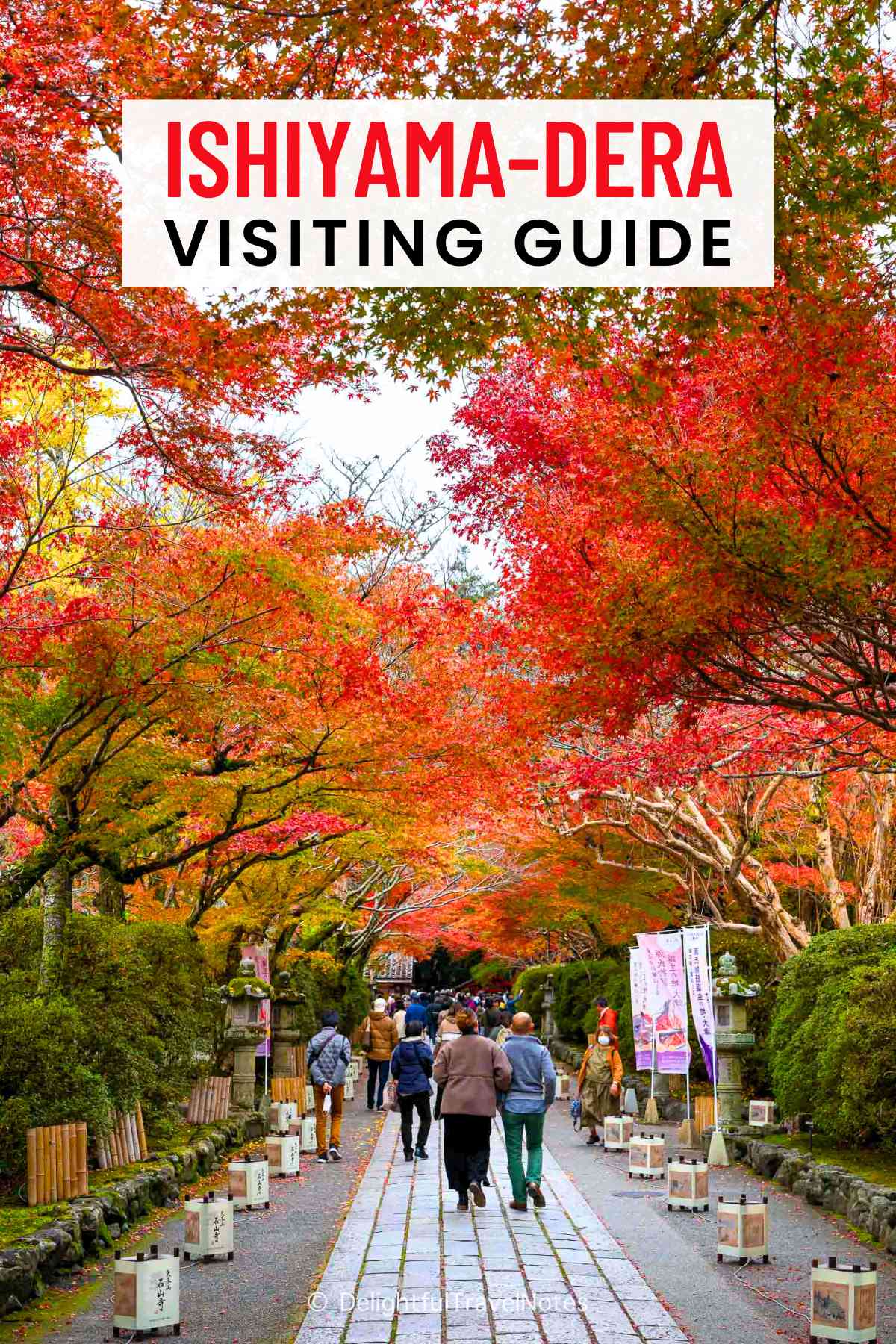
How to Get There
Visiting Ishiyamadera from Kyoto is very straightforward. Simply take the JR Tokaido Main Line, then transfer to the Keihan Ishiyama Sakamoto Line bound for Ishiyamadera Station. The entire train rides should take 30-40 minutes, depending on where you catch the first train. We were staying at The Westin Miyako Kyoto (Agoda | Booking), so we started from Keage Station and reached Ishiyamadera Station after 40 minutes.
Ishiyamadera Station is pretty small (and according to my husband, the restroom is not very clean). Once we stepped outside, however, we were greeted by a peaceful and picture-perfect setting.

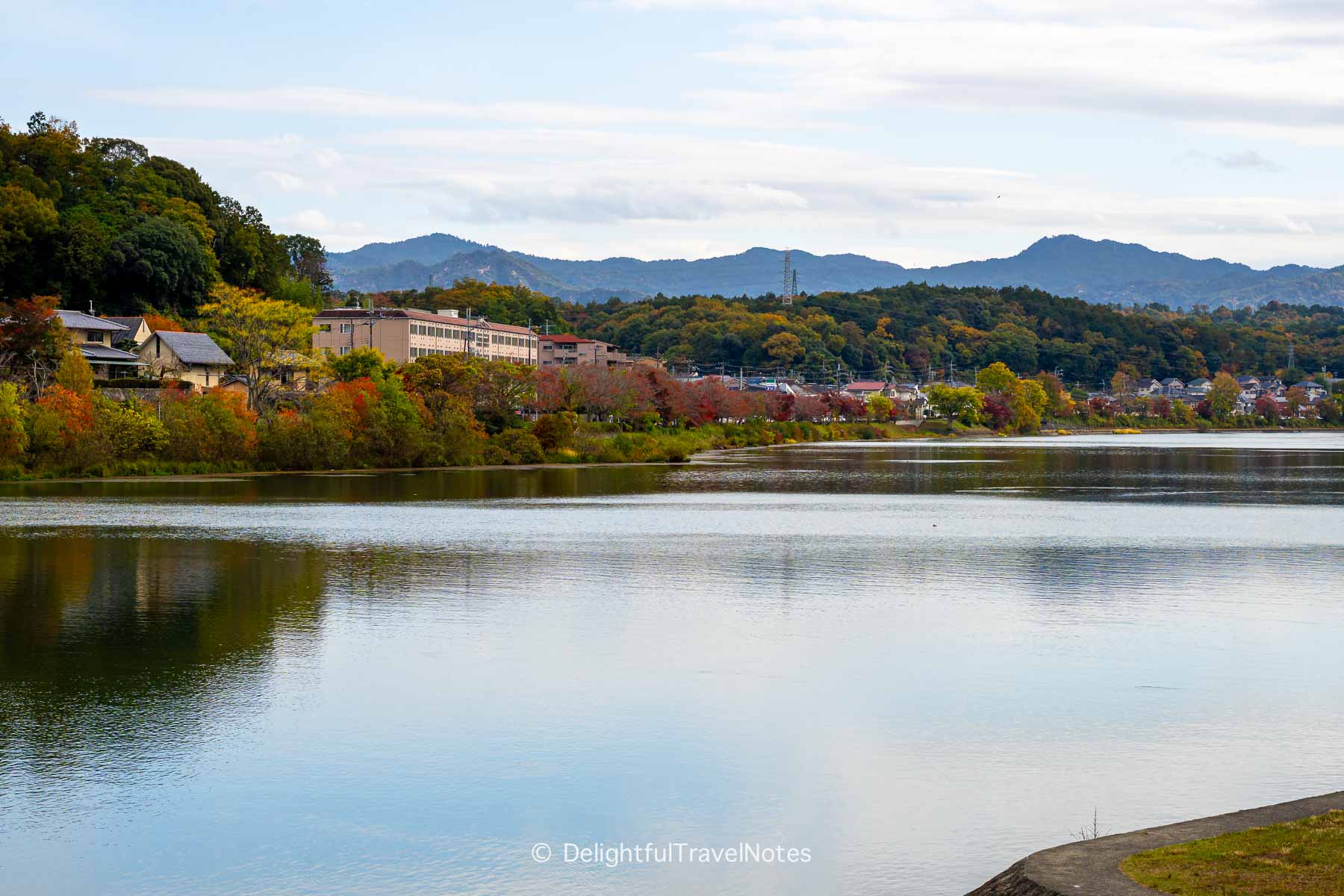
In front of us was Seta River (Setagawa) and across the river, we could see gentle hills layered with autumn foliage, ranging from soft yellows to vibrant oranges. Low-rise buildings and traditional-style houses rested at the foot of these hills, blending into the scenic backdrop. Ishiyamadera is just 15 minute walk from the station, so we walked along the river, enjoying the mesmerizing and serene scenery.
Visiting Guide
Our visit was on November 27th, 2024. Due to warm weather, the foliage season was delayed and at the time of our visit, I would say the color progress was about 80%. Some of the maple trees were still transitioning from green to shades of fall.
After our pleasant walk along Seta River, we arrived at the main entrance of Ishiyamadera. At first glance, the unassuming gate gave no hint of the temple’s extensive grounds beyond it. We had no idea what awaited us!
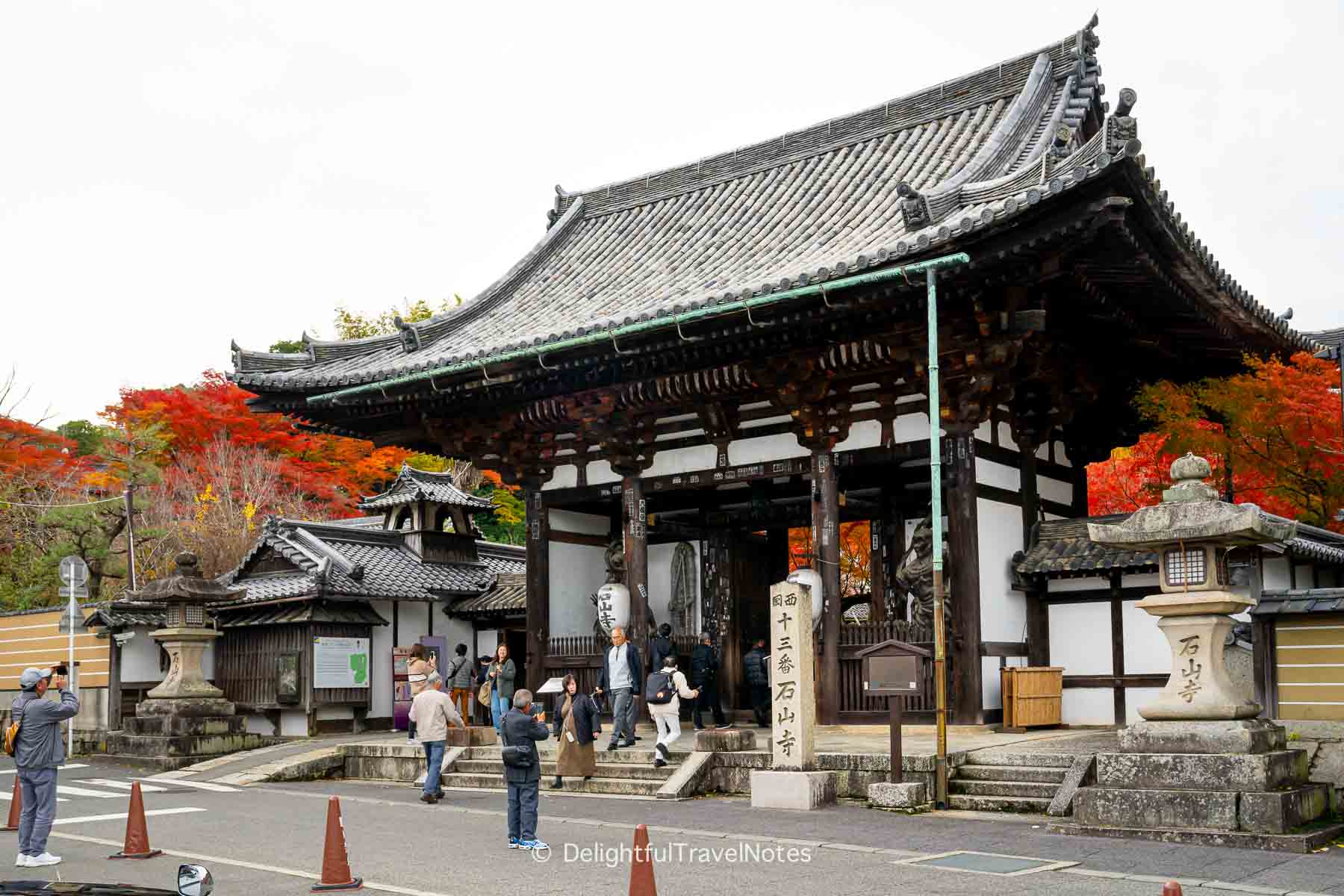
Stepping inside, we found ourselves on a long and stunning pathway leading into the temple grounds. A canopy of maples in vivid shades of red, orange, and gold arched gracefully overhead, creating a beautiful tunnel of color. Along the stone path, moss-covered lanterns and wooden lantern boxes added to the enchanting ambiance.
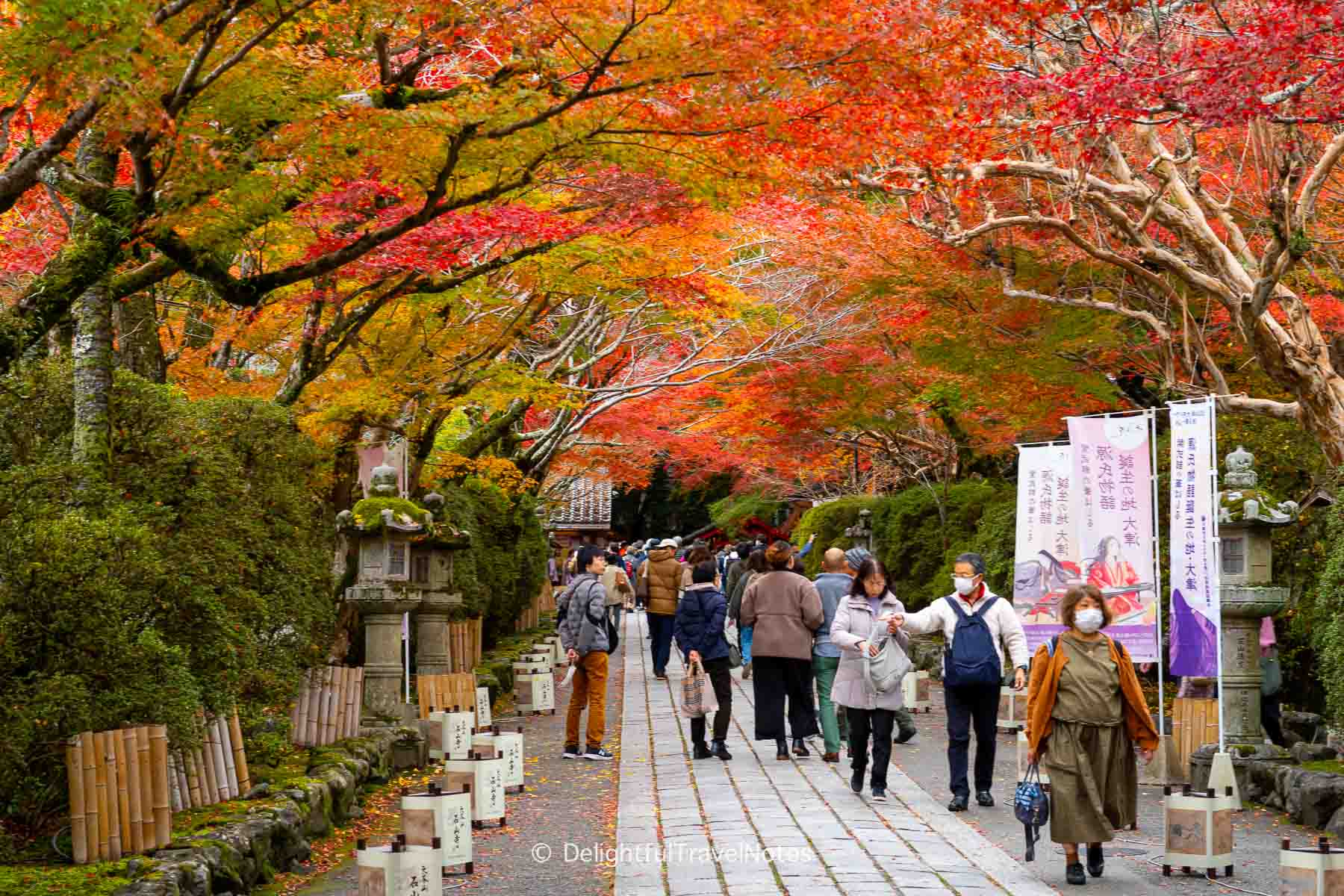
Of all the temples we visited for fall foliage on this trip, I think Ishiyamadera has the most impressive entrance approach. It has an extended pathway and the canopy of maples was at an ideal height for visual impacts.
The path was lively with locals strolling along, some pausing to take photographs or admire the brilliant foliage. We counted only a handful of foreign visitors that afternoon. This entryway was the most crowded part of Ishiyamadera. After that, the temple grounds revealed plenty of elevated spots and winding paths for visitors to spread out and explore.
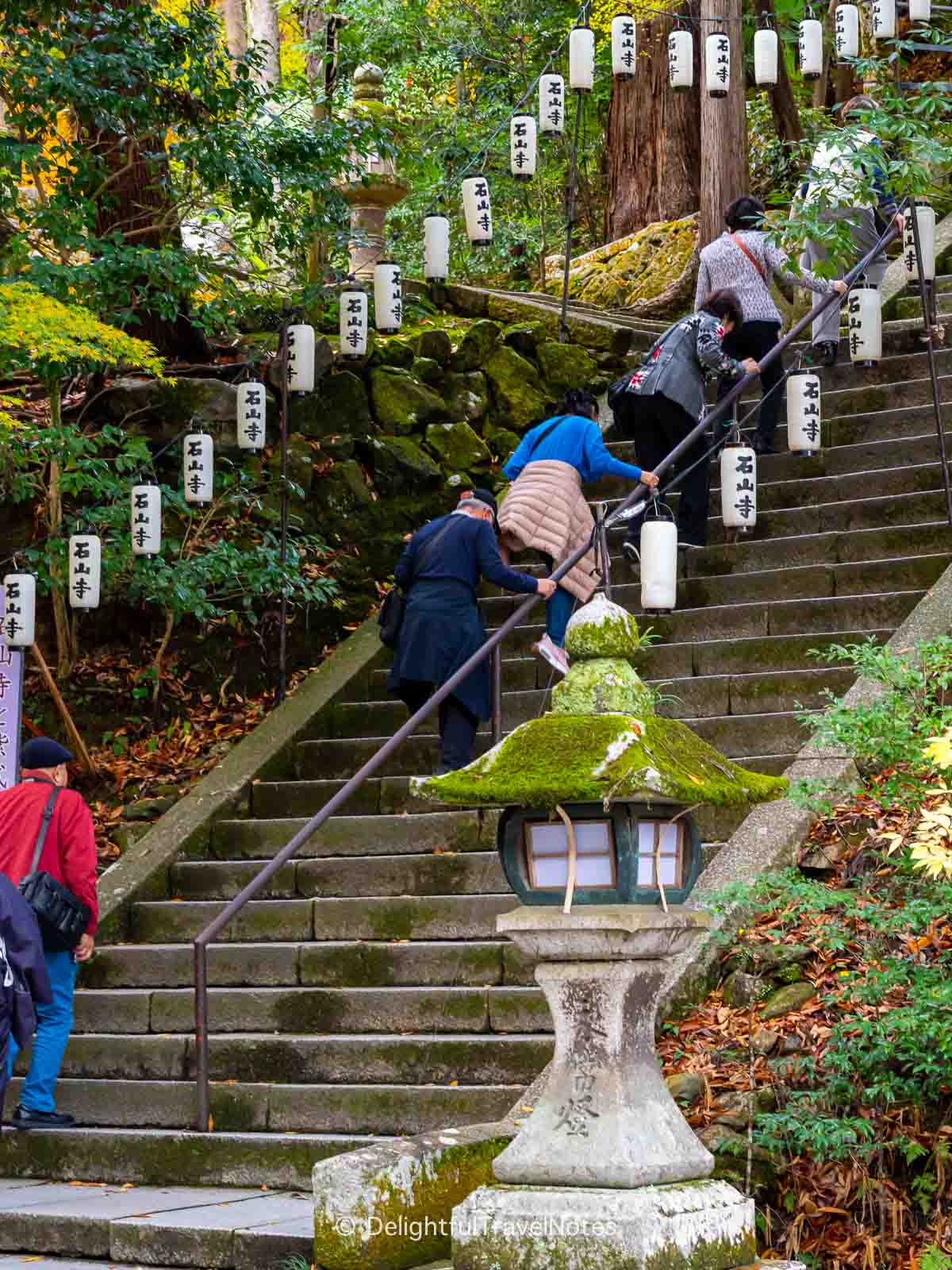
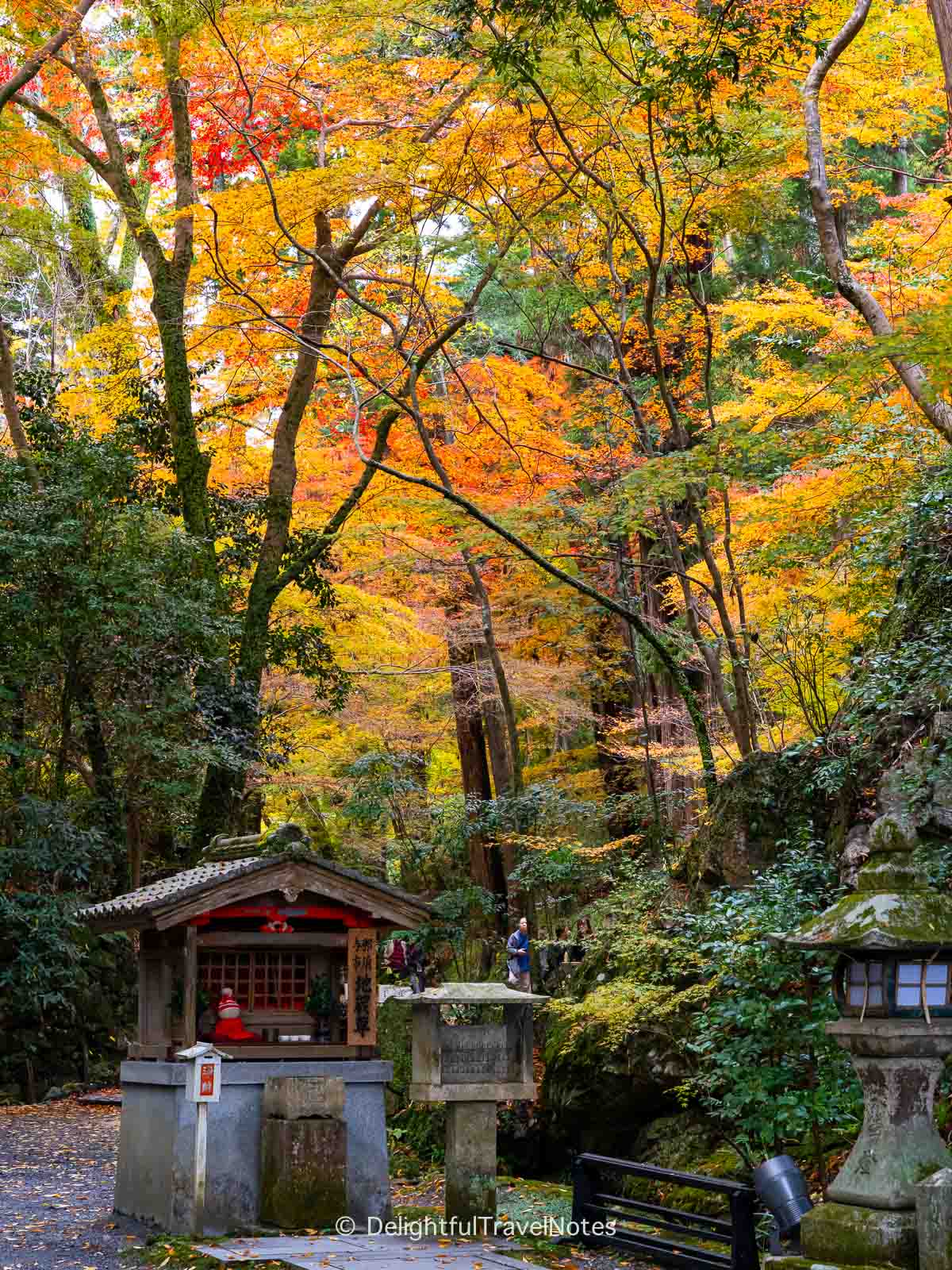
Because Ishiyamadera sits on a cliff, be prepared for a lot of steps. We climbed the first set of steps to reach the main grounds. Above us was the forest canopy with leaves transitioning from green to shades of yellow, orange, and red.
From the grounds, we could see the elegant Tahoto Pagoda on the hillside. Its warm wooden tones harmonized well with the autumn colors.
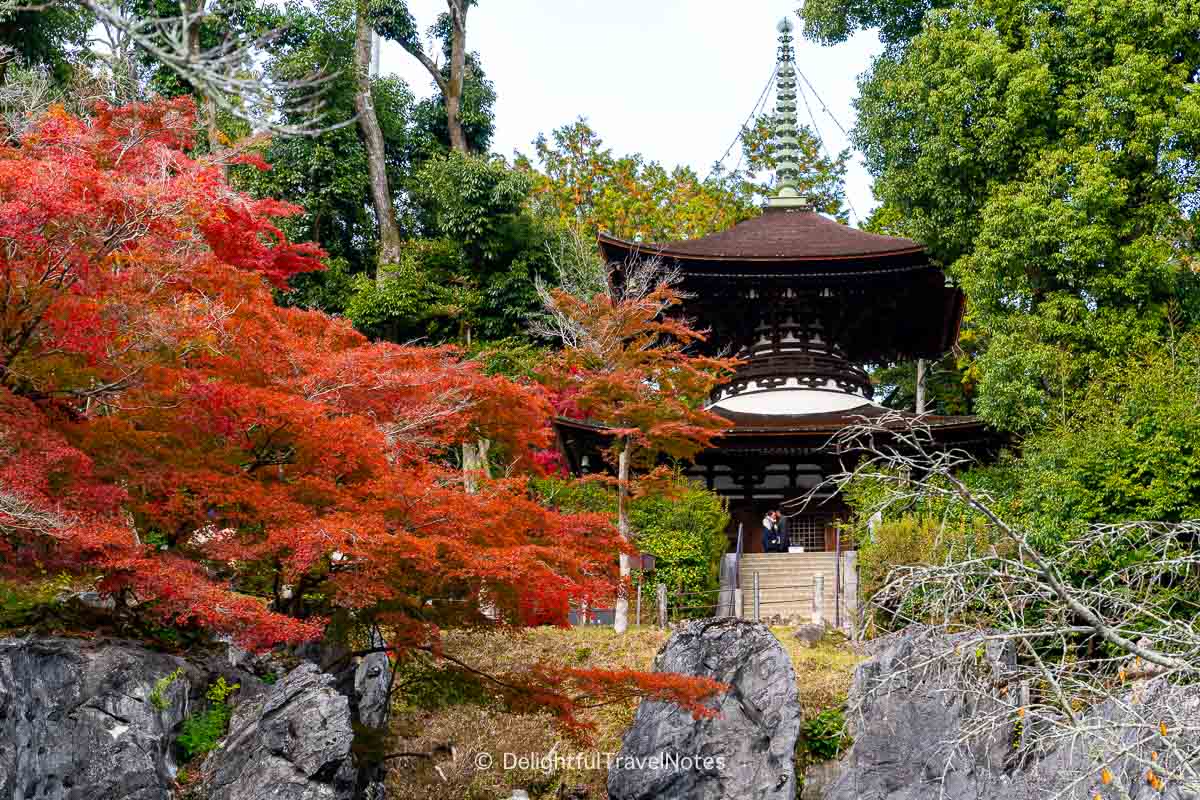
Climbing a bit higher, we reached the Main Hall, which is designated a National Treasure. This impressive wooden structure, rebuilt in 1096, is the oldest building in Shiga Prefecture. Like Kiyomizu-dera in Kyoto, the hall of Ishiyamadera is supported by wooden pillars assembled like a scaffolding. I don’t have a great photo of it so you may look at this photo on wiki for a closer look of the structure.
The main hall features a spacious veranda that extends outward like a stage, providing visitors with an elevated vantage point. The vibrant maple leaves filled every window-like opening, creating a natural “picture frame” effect.
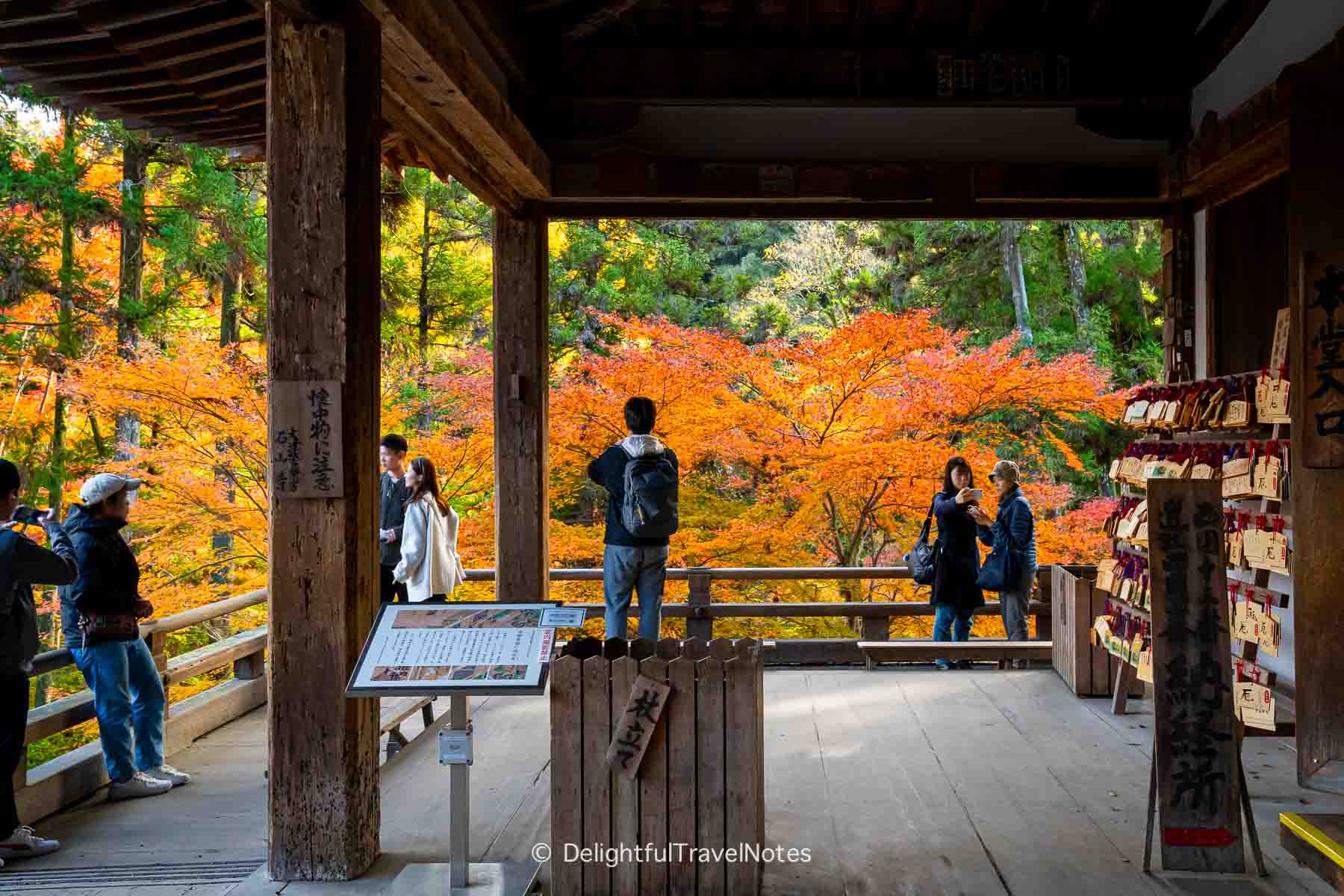
Both the main hall and Tahoto Pagoda are fine examples of traditional Japanese architecture. Inside the main hall, you can pay respect to Kannon and obtain a goshuin (temple stamp).
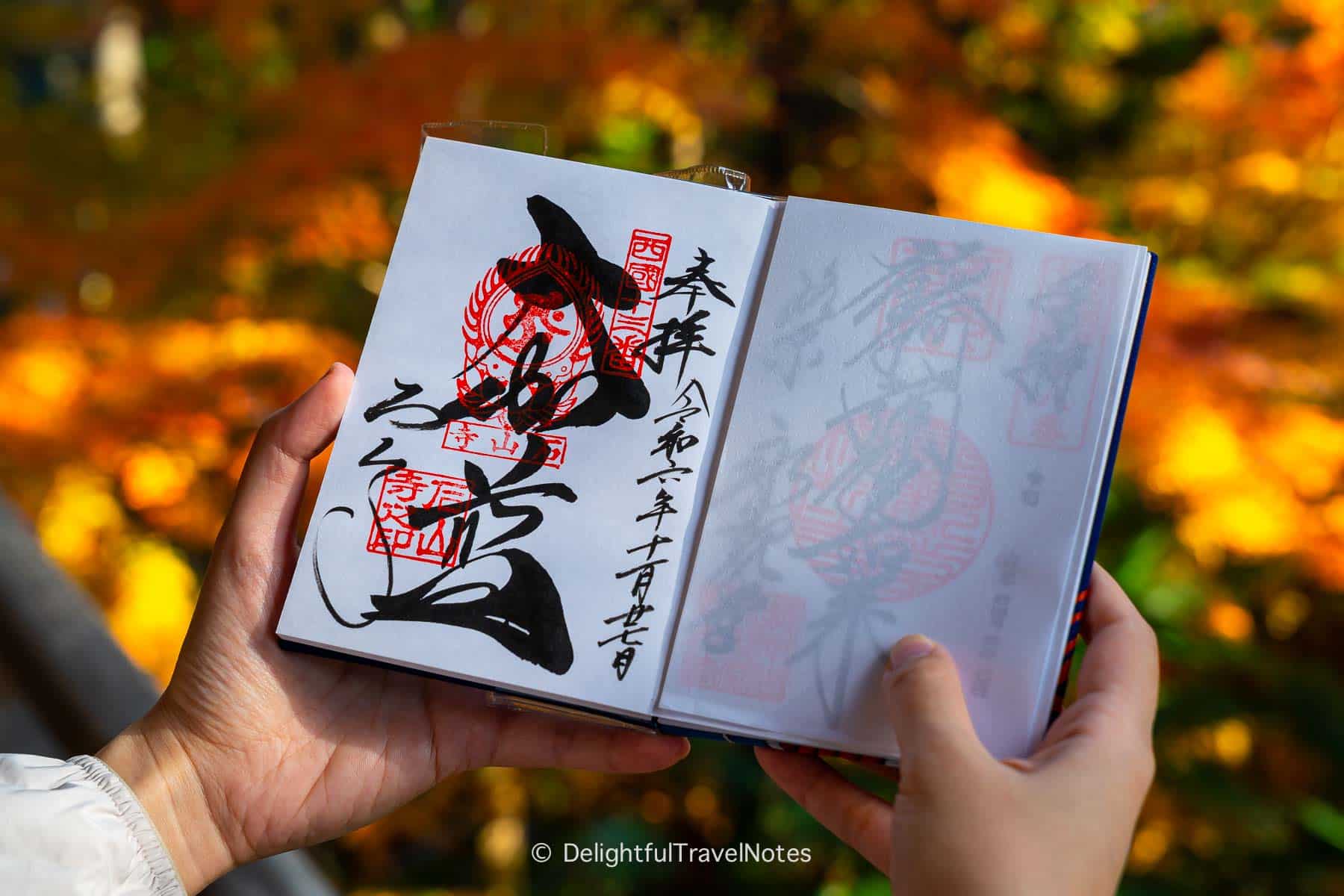
This temple is famously associated with Murasaki Shikibu, the author of The Tale of Genji. Legend says she began writing this classic work of Japanese literature at Ishiyamadera in 1004, inspired by a full moon she observed from the temple. There is a statue of her wearing elegant robes on the temple grounds as a tribute.
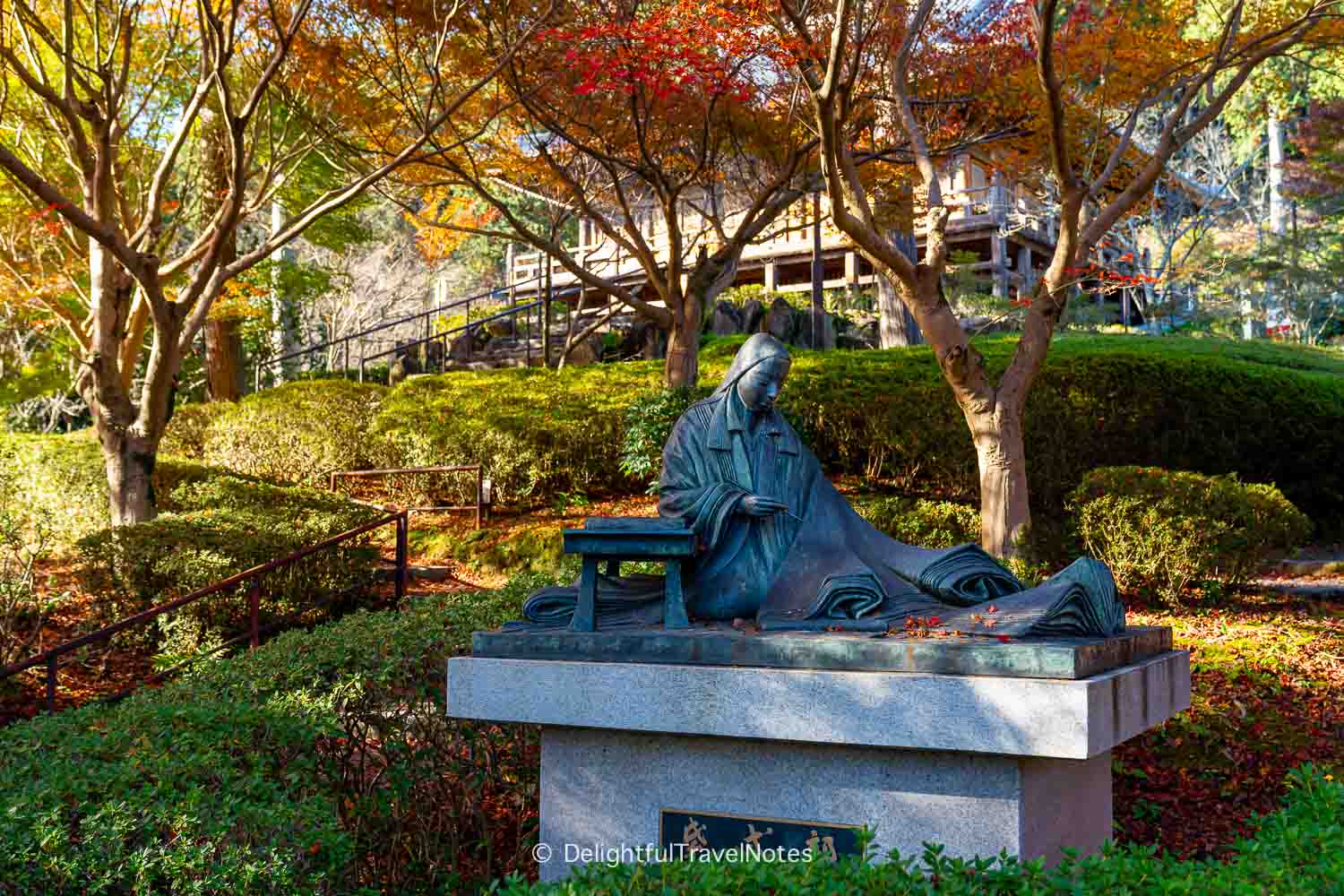
The spacious grounds of Ishiyamadera include sprawling stairways and paths leading to various smaller halls, shrines, and view points of the city and river below. A leisurely walk can easily fill a few hours if you pause to take photos or immerse yourself in its peaceful natural setting. We spent a couple of hours at the temple and it felt almost like a mini hike in the mountains. Apart from the main gate and main hall, other areas were pretty quiet.
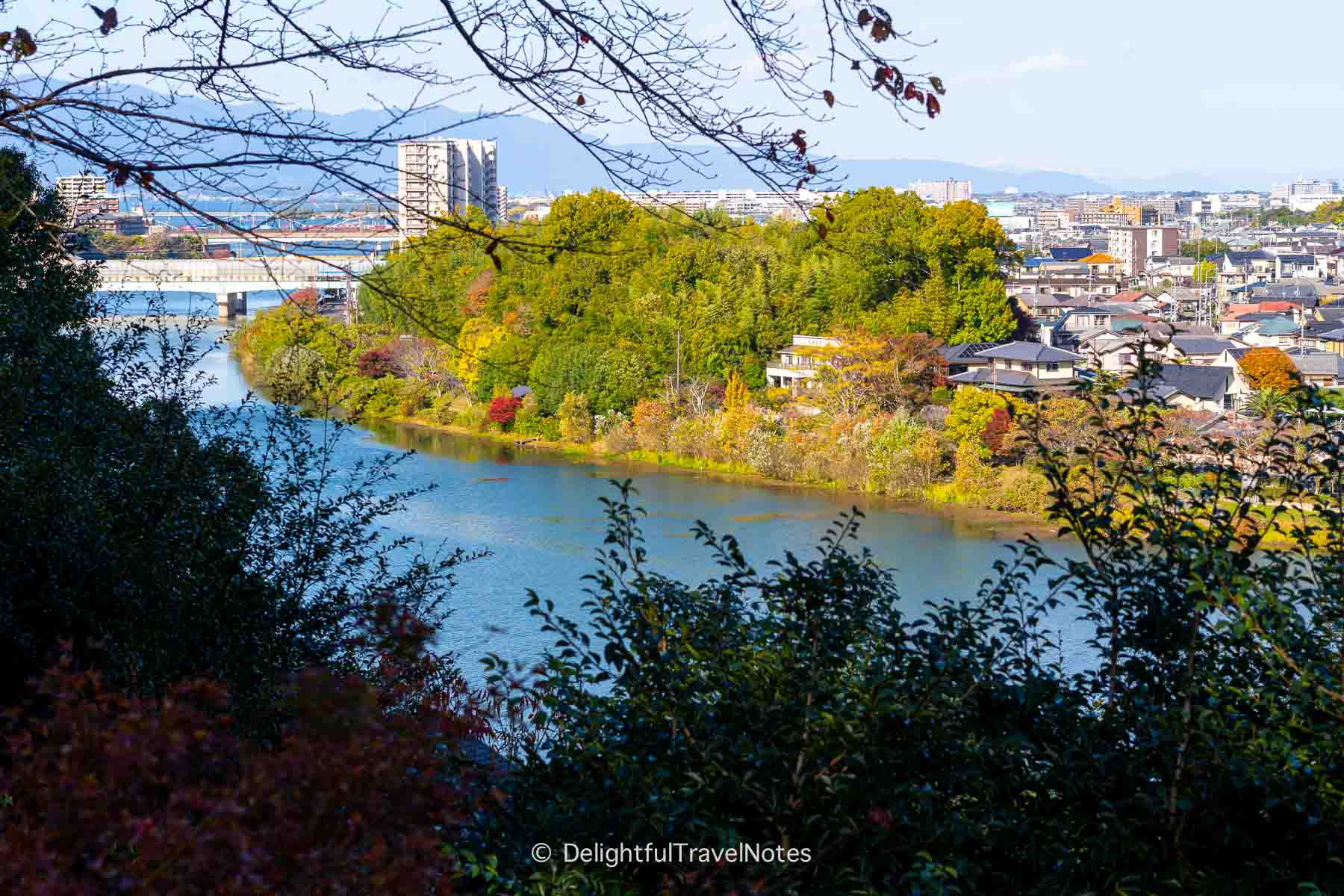
Additional Information
The temple also hosted fall illumination in the evenings but we didn’t stay to see it. Night illuminations usually let you appreciate fall colors in a completely different way. Personally, I still prefer viewing the vibrant foliage in daylight. That said, if you have the chance, seeing one or two night illuminations in the fall can be a memorable experience.
Ishiyamadera is also called Temple of Flowers as there are various flowers that bloom at different times of the year on its grounds, such as sakura, plum and camellia. We walked across their huge sakura garden and at that time of the year, the cherry trees had already lost all of their leaves. A number of camellia trees were in bloom though.
Final Thoughts
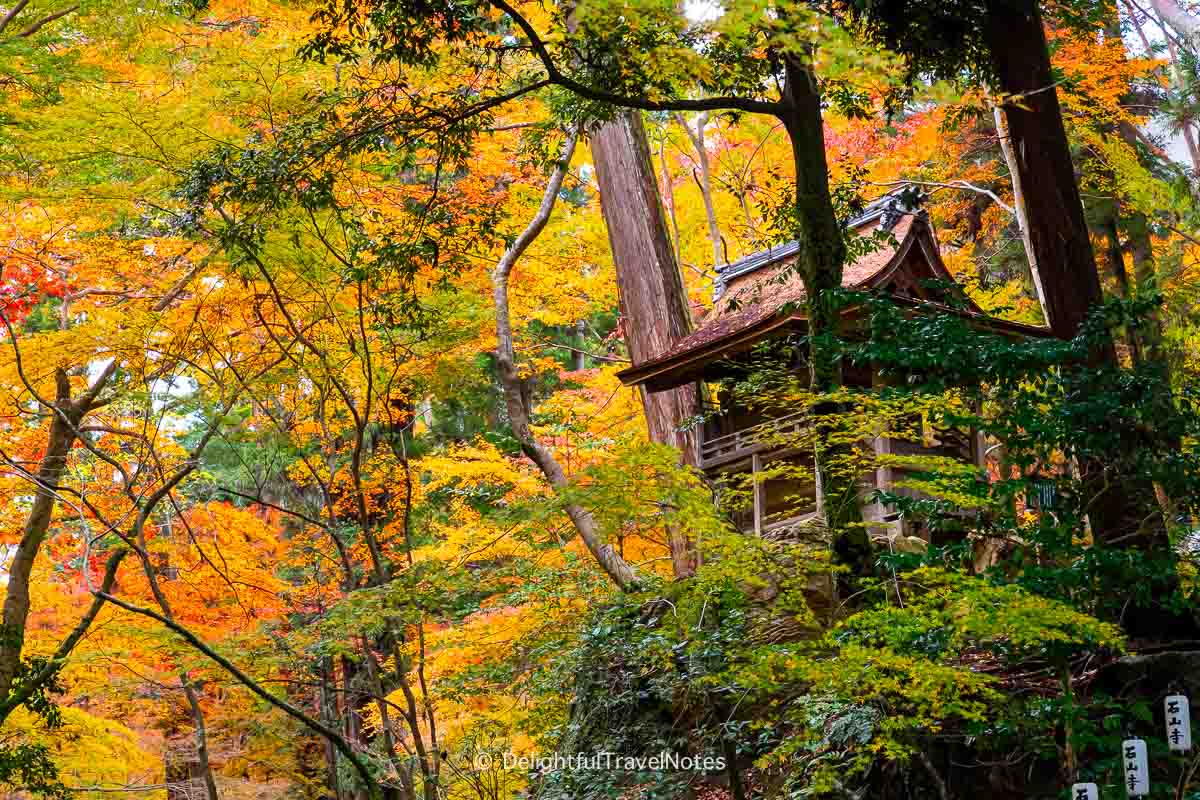
Our visit to Ishiyamadera in Otsu, Shiga was delightful from the moment we stepped out of Ishiyamadera Station until the end. The weather was pleasant and we kinda got to experience fall scenery in both a temple setting and a natural setting due to the location of this temple.
I think Ishiyamadera shares quite a few similarities with Kiyomizu-dera while being less crowded. It is not far away from Kyoto, but if you have limited time or tight schedule, I wouldn’t prioritize it. However, if time allows, I definitely recommend doing a half day or full day trip to visit Ishiyamadera plus a few other spots in Otsu.

Explore More
Sumiyoshi Taisha – A Must-See in Osaka for Cultural Lovers
Fall Foliage at Eikan-do in Kyoto: Day and Night Illuminations Comparison
The Westin Miyako Kyoto Review: Elegant Hotel in Higashiyama with Renovated Rooms